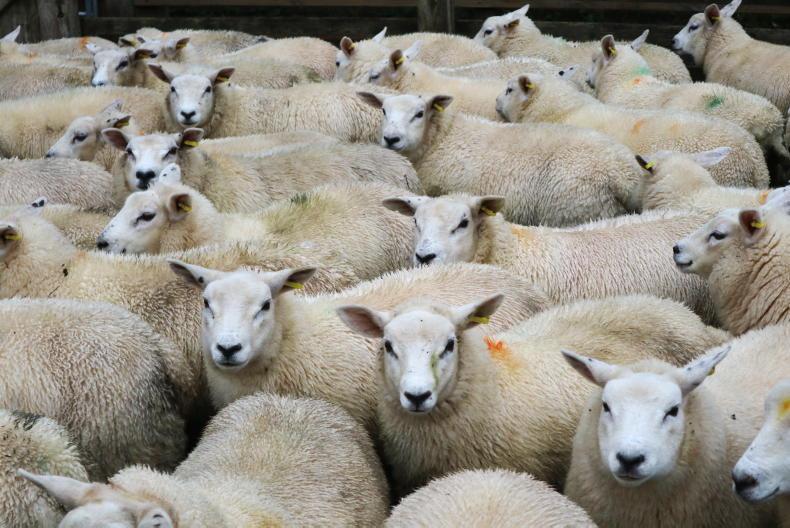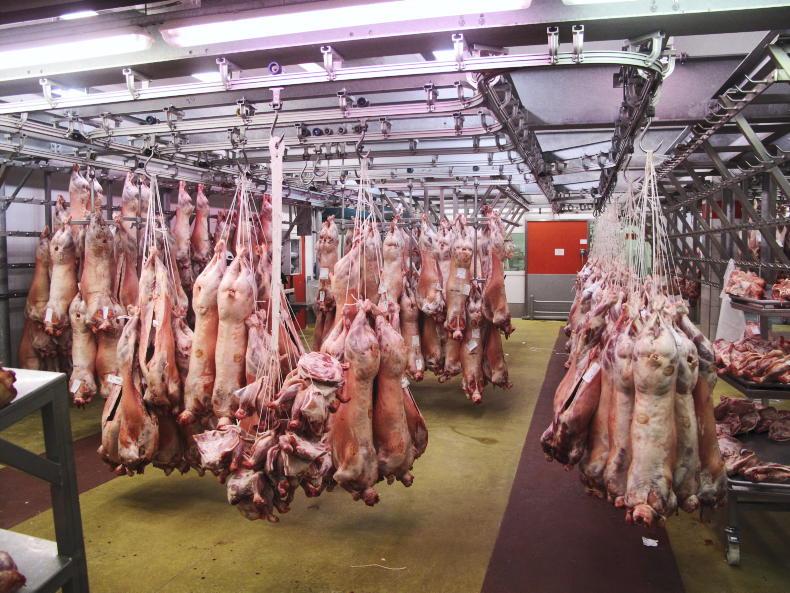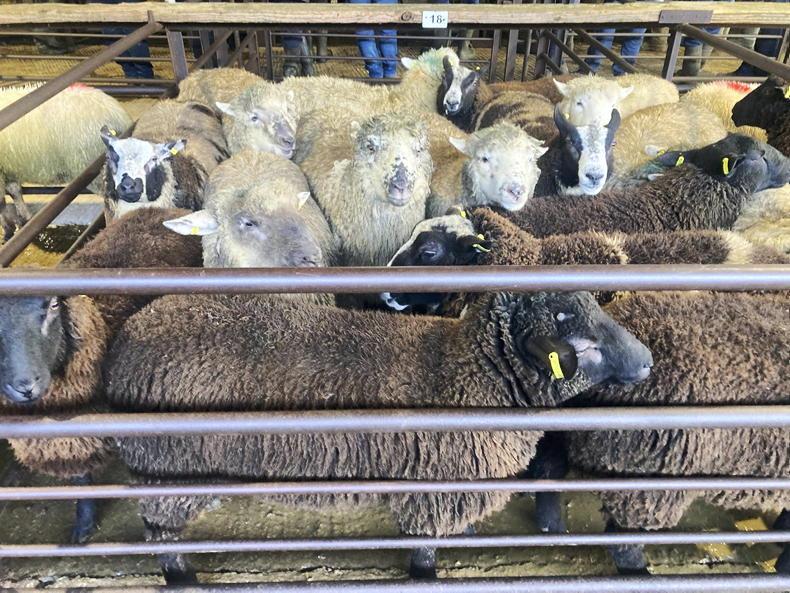You couldn’t begin to explain to a non-farmer just how many fascinating topics of discussion there are when it comes to lambing sheep.
If I’m on the phone to one of my farming cronies, and we’re on that subject, 20 minutes pass in a flash. And that isn’t usually the end of the conversation; most likely something more urgent requires us to temporarily end the call.
I often wonder if someone were to write a sheep-related book at this time of year, would it be better to name it, Lambing Disasters,
rather than, How to Be a Successful Shepherd? I know which one I’d buy.
I usually write a summary at the end of my annual lambing battle, but there are so many worthwhile snippets that I thought it might be useful to mention a few happenings even at this stage.
And does anyone really want to read about the rare miraculous victory when we bring something back from the brink of death, now out in the field with two healthy lambs at foot? No, I thought not. It’s how we cope with those gut-wrenching failures that really interests other livestock farmers.
Calcium
I suspect I have some sort of low-level issue with calcium levels in late pregnancy. Every year, two or three sheep go down with milk fever when they are three weeks off lambing.
Usually, a good dose of calcium below the skin sees them recovering, but occasionally this persists and develops into full-blown twin-lamb disease. This then entails using dairy cow quantities of calcium, as well as daily doses of glycerol. And despite slipping them out to a sheltered field of lovely grass at the same time, my success rate tends to be zero.
In addition, the calcium issue has a habit of showing up again in ewes that produce triplets.
It’s always trebles, and it manifests itself soon after lambing, when they don’t clean their meal at the next feeding.
Typically, she will be slightly tired, spends too much time lying, isn’t overly interested in the lambs and will have ice-cold ears. Although I administer calcium (and sometimes magnesium too if I’m really panicking) recovery takes a couple of days. To be honest, you would be tempted to say that she was a bit overwhelmed by the whole business, and just needed to rest for a day or so. That’s the best way to describe it.
E coli
I’m probably not alone in having ongoing problems with E coli in new-born lambs. When Spectam was removed from our armoury, we began to clean and disinfect each pen after freshly lambed ewes had vacated the space.
However, we still have the spectre of E coli lurking around, like a predator, in the background.
Currently, our control strategy works like this: triplets are automatically tubed with colostrum and given 1ml of amoxycillin as near birth as possible. Singles and doubles don’t receive any antibiotic (or colostrum) unless a trigger point has been reached, which tends to be delayed suckling, or lambs that are a bit sleepy.
So far, this tactic has worked, but if a lamb is missed and E coli gets established for 12 hours, then you have a very sick patient on your hands for about three days.
Sob story
I was planning to finish with a miraculous success tale, when my informative words would really be false modesty dressed up as something worth telling. But no, it’s another sob story.
I was standing in the lambing shed one evening, when a heavily pregnant ewe had a complete seizure. After a frantic phone call to the vet, we gave her calcium, magnesium, and antibiotics.
She came out of the fit, stood up, shook herself and looked normal again. To further enhance my utter brilliance as a stockman, she lambed a big, healthy pair about five hours later.
After 48 hours, I wrote a huge ‘Mg’ across her side, and popped her out to the field.
A week later, I noticed two or three hoody crows hopping menacingly close to a prone ewe in the distance and, guess what? Yep, she was stone dead, with two wee lambs huddled in close to her. And the moral of this story must surely be that, once again, don’t count your chickens, and definitely don’t ever boast about your successes.
Read more
Sheep Management: preventing watery mouth and last minute lambing preparations
Watch: Farmer Writes - hard to beat high dry matter silage
You couldn’t begin to explain to a non-farmer just how many fascinating topics of discussion there are when it comes to lambing sheep.
If I’m on the phone to one of my farming cronies, and we’re on that subject, 20 minutes pass in a flash. And that isn’t usually the end of the conversation; most likely something more urgent requires us to temporarily end the call.
I often wonder if someone were to write a sheep-related book at this time of year, would it be better to name it, Lambing Disasters,
rather than, How to Be a Successful Shepherd? I know which one I’d buy.
I usually write a summary at the end of my annual lambing battle, but there are so many worthwhile snippets that I thought it might be useful to mention a few happenings even at this stage.
And does anyone really want to read about the rare miraculous victory when we bring something back from the brink of death, now out in the field with two healthy lambs at foot? No, I thought not. It’s how we cope with those gut-wrenching failures that really interests other livestock farmers.
Calcium
I suspect I have some sort of low-level issue with calcium levels in late pregnancy. Every year, two or three sheep go down with milk fever when they are three weeks off lambing.
Usually, a good dose of calcium below the skin sees them recovering, but occasionally this persists and develops into full-blown twin-lamb disease. This then entails using dairy cow quantities of calcium, as well as daily doses of glycerol. And despite slipping them out to a sheltered field of lovely grass at the same time, my success rate tends to be zero.
In addition, the calcium issue has a habit of showing up again in ewes that produce triplets.
It’s always trebles, and it manifests itself soon after lambing, when they don’t clean their meal at the next feeding.
Typically, she will be slightly tired, spends too much time lying, isn’t overly interested in the lambs and will have ice-cold ears. Although I administer calcium (and sometimes magnesium too if I’m really panicking) recovery takes a couple of days. To be honest, you would be tempted to say that she was a bit overwhelmed by the whole business, and just needed to rest for a day or so. That’s the best way to describe it.
E coli
I’m probably not alone in having ongoing problems with E coli in new-born lambs. When Spectam was removed from our armoury, we began to clean and disinfect each pen after freshly lambed ewes had vacated the space.
However, we still have the spectre of E coli lurking around, like a predator, in the background.
Currently, our control strategy works like this: triplets are automatically tubed with colostrum and given 1ml of amoxycillin as near birth as possible. Singles and doubles don’t receive any antibiotic (or colostrum) unless a trigger point has been reached, which tends to be delayed suckling, or lambs that are a bit sleepy.
So far, this tactic has worked, but if a lamb is missed and E coli gets established for 12 hours, then you have a very sick patient on your hands for about three days.
Sob story
I was planning to finish with a miraculous success tale, when my informative words would really be false modesty dressed up as something worth telling. But no, it’s another sob story.
I was standing in the lambing shed one evening, when a heavily pregnant ewe had a complete seizure. After a frantic phone call to the vet, we gave her calcium, magnesium, and antibiotics.
She came out of the fit, stood up, shook herself and looked normal again. To further enhance my utter brilliance as a stockman, she lambed a big, healthy pair about five hours later.
After 48 hours, I wrote a huge ‘Mg’ across her side, and popped her out to the field.
A week later, I noticed two or three hoody crows hopping menacingly close to a prone ewe in the distance and, guess what? Yep, she was stone dead, with two wee lambs huddled in close to her. And the moral of this story must surely be that, once again, don’t count your chickens, and definitely don’t ever boast about your successes.
Read more
Sheep Management: preventing watery mouth and last minute lambing preparations
Watch: Farmer Writes - hard to beat high dry matter silage










SHARING OPTIONS